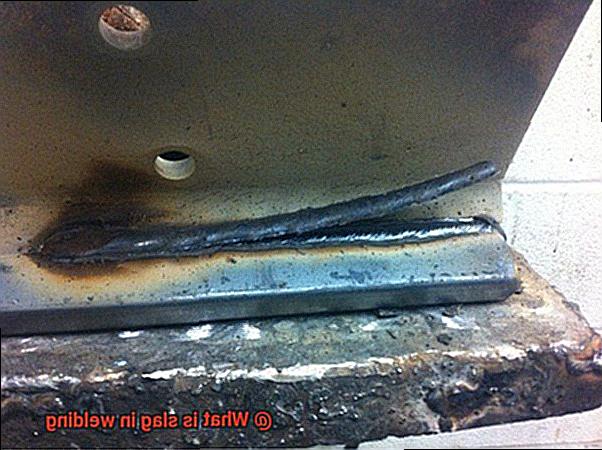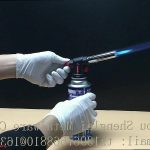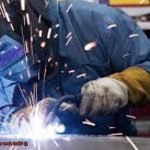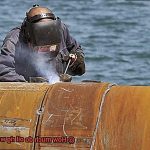Are you captivated by the art of welding and its ability to fuse metal elements?
Perhaps you’re a seasoned welder seeking to expand your knowledge of the welding process? Regardless of your experience level, comprehending the intricacies of slag in welding is crucial for producing top-notch welds.
Slag may seem like a mundane by-product, but it plays a pivotal role in determining the quality of a weld. It’s formed when the flux used to safeguard the welding process liquefies and solidifies around the electrode.
This creates a protective layer on the surface of the weld that shields it from impurities and ensures a robust seam. But there’s more to slag than meets the eye.
It contains various minerals such as silica, lime, alumina, which can provide insights into the composition of welded materials and gauge how well the welding process has gone. In this blog post, we’ll delve deep into slag’s world, examining its properties, uses in welding, and removal techniques.
By the end, you’ll have an enhanced understanding and appreciation for this welding by-product and its contribution to producing exceptional welds.
The Formation of Slag in Welding
Contents
Slag is a byproduct that forms as a glassy layer on top of the weld pool during welding.
This layer is composed of impurities like oxides and other contaminants that are present in the materials being welded. Think of slag as a guardian angel for your weld.
It forms due to a series of chemical reactions between the flux coating on the welding electrode, oxygen in the air, and impurities in the base metal being welded. The flux coating on the welding electrode melts and forms a protective shield over the molten metal as it cools.
As the molten metal solidifies, the slag forms on top of it. Slag is an indispensable element in welding because it protects the weld from contamination and oxidation.
It acts as a barrier between the weld and any external factors that could harm or jeopardize its strength. However, if not handled carefully, slag can also cause problems like slag inclusion.
This occurs when small particles of slag become trapped in the weld, leading to weak spots that can break under stress. To prevent this issue and ensure an optimal final product, welders must remove all traces of slag from their welds before beginning a new pass.
They can achieve this by using a flux during the welding process, which can help to prevent slag formation by melting impurities and allowing them to rise to the surface. Proper temperature control during the welding process is also crucial in preventing slag formation.
By taking steps to prevent slag formation and effectively managing any slag that does form, welders can enhance their results and achieve better-quality finished products.
Problems Caused by Slag
Slag is the yin and yang of welding.
It serves as a shield to protect the weld pool from impurities and oxidation, but if not handled with care, it can result in significant problems that could compromise the strength and appearance of the welded joint. One of the most common issues caused by slag is slag inclusion.
When solidified slag becomes trapped in the weld metal, it creates weak spots that can reduce the integrity of the weld. Another problem is porosity, where gas pockets get trapped in the weld metal, leading to cracking and failure under stress.
However, it’s not just about strength and reliability. Slag can also negatively impact the appearance of the welded joint, resulting in rough surfaces, uneven beads, and discoloration.
These issues not only look unsightly but can also affect the performance and strength of the weld. To prevent these problems, proper welding techniques and materials are essential.
This means ensuring that the welding area is clean and free of contaminants before starting the weld. Additionally, choosing the right flux for your welding application can help prevent slag formation.
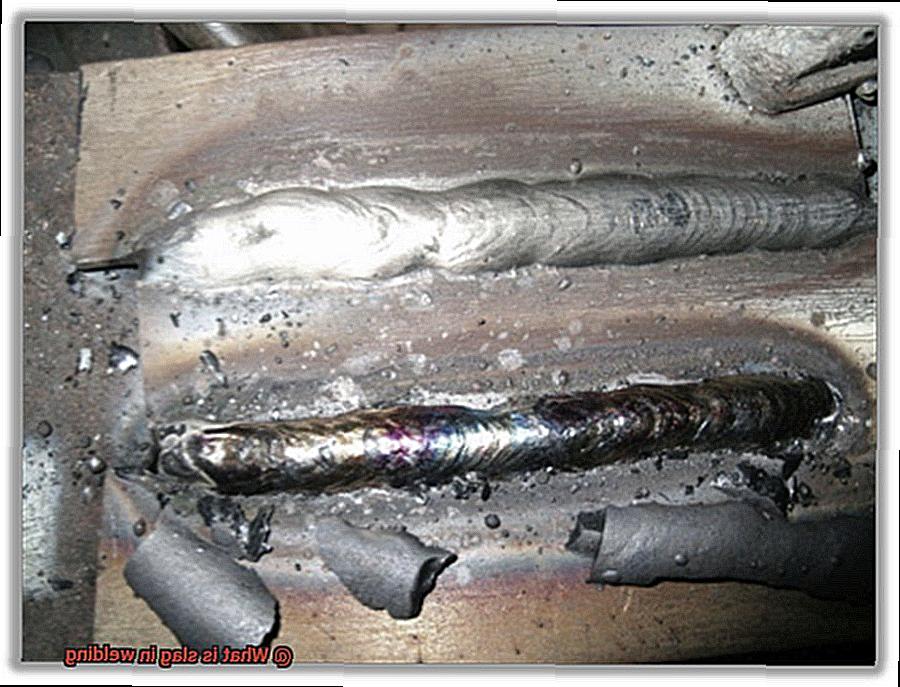
Despite taking all necessary precautions, slag can still form during welding. To avoid further complications, it’s crucial to remove it promptly before continuing with any further welding.
Welders can use a chipping hammer or wire brush to scrape away any excess material, but if not removed correctly, slag can re-form during subsequent welding passes. In conclusion, understanding the problems caused by slag in welding is crucial to produce high-quality welds that are both strong and aesthetically pleasing.
By using proper welding techniques and removing slag promptly, welders can prevent these issues and ensure that their welded joints are reliable and durable.
How to Prevent Slag Formation
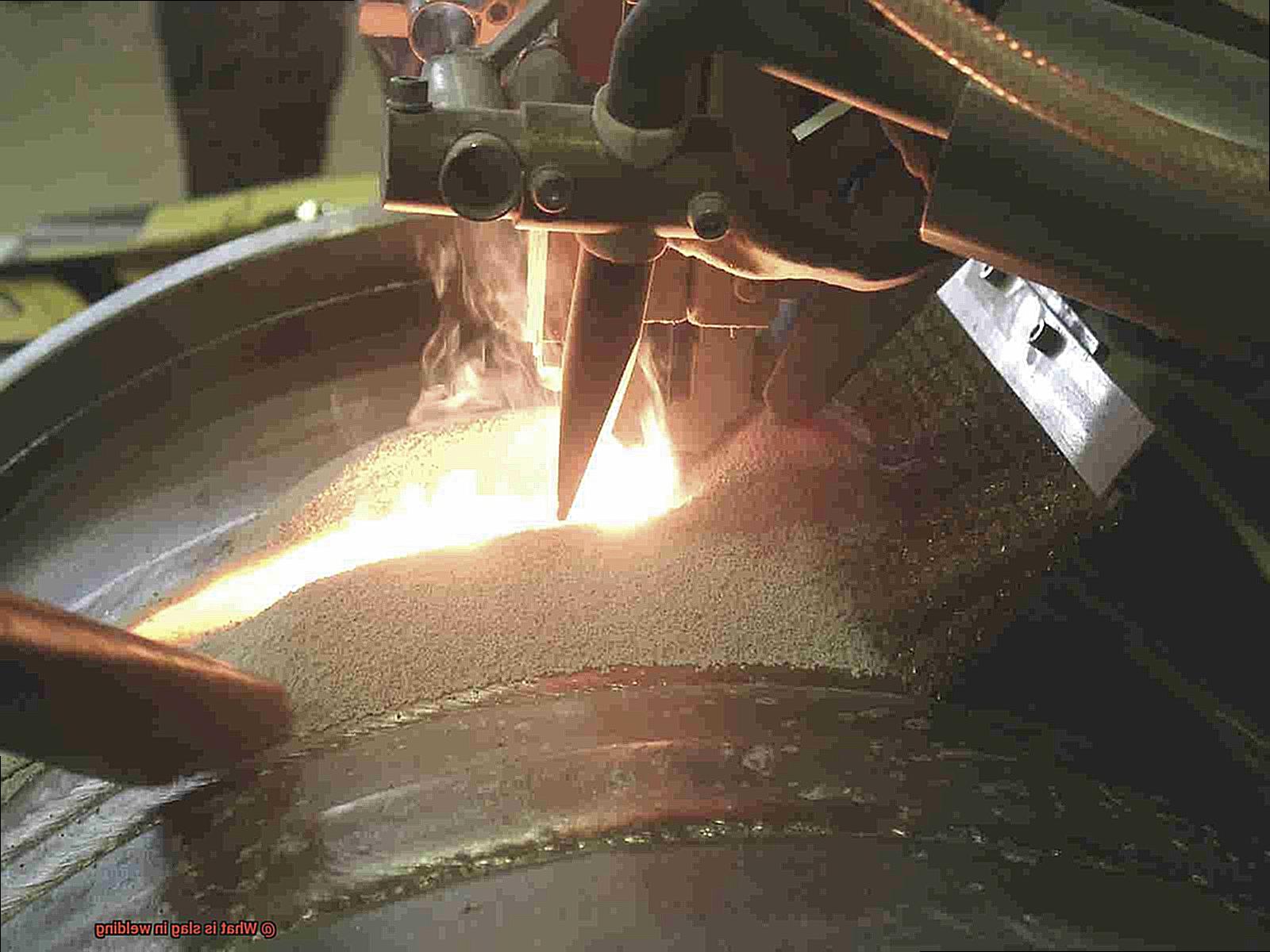
Using the Right Welding Electrode or Filler Metal
When it comes to welding, using the right welding electrode or filler metal is crucial in preventing slag formation. Choosing low hydrogen electrodes or flux-cored wires can minimize slag formation and produce high-quality welds.
Low hydrogen electrodes have a low slag formation rate, while flux-cored wires contain a powder flux that melts and creates a protective layer over the weld pool, preventing impurities from entering. By using the right welding electrode or filler metal, you can minimize slag formation and achieve strong and durable welds.
Proper Welding Parameters
Maintaining proper welding parameters such as amperage, voltage, and travel speed is equally important in preventing slag formation. Excessive heat input can cause more slag to form, while insufficient heat can result in incomplete fusion and porosity.
Following the manufacturer’s recommended settings and adjusting them according to the thickness and type of material being welded is critical in achieving defect-free welds. Proper welding parameters ensure that the heat input is just right to prevent excessive slag formation.
Clean Work Area
A clean work area is vital in preventing slag formation during welding. Impurities such as oil, grease, rust, or moisture can react with the welding arc and cause more slag or other defects such as porosity or cracks.
Therefore, it’s crucial to clean the metal surface before welding using a wire brush or grinder and avoid touching it with bare hands. By keeping your work area clean, you can minimize impurities getting into your weld and causing slag.
Proper Storage and Handling of Welding Consumables
Proper storage and handling of welding consumables such as electrodes or filler metals can also reduce slag formation. Moisture or humidity can affect the performance of certain types of electrodes, causing them to produce more slag or porosity.
Therefore, it’s essential to store them in a dry place and avoid exposing them to moisture or high temperatures. By storing your welding consumables properly, you can prevent slag formation and ensure that your welds are strong and durable.
Regular Inspection
Regular inspection is key in identifying potential slag formation early on. By inspecting your welds regularly, you can detect any signs of slag formation before it becomes too severe.
Taking corrective action early on can prevent further issues down the line. Regular inspection ensures that your welds are free from defects such as slag and meet industry standards and customer expectations.
So, preventing slag formation is essential in achieving high-quality welds that are strong and durable. Using the right welding electrode or filler metal, maintaining proper welding parameters, keeping your work area clean, storing your welding consumables properly, and inspecting your welds regularly are all vital steps in preventing slag formation during welding.
What is Flux and its Role in Welding?
The answer lies in something called flux, a superhero-like substance that plays a crucial role in welding.
Flux is like a suit of armor for your weld that shields it from contamination and oxidation. It acts as a barrier between the metal and the air, preventing oxides and impurities from weakening the weld.
In simpler terms, it is a defender that ensures the strength and durability of your welding project. Different types of flux are used in welding, such as gas flux, self-shielding flux, and submerged arc flux, each with its unique properties and characteristics.

For example, gas flux is commonly used in MIG welding applications, while self-shielding flux is typically used in stick welding. Each type of flux has its strengths and weaknesses, and choosing the right one can make all the difference in the quality of your weld.
One of the essential roles of flux is to eliminate slag, which is a byproduct of the welding process. Slag is a layer of metal that forms on top of the weld as it cools, making it challenging to remove without damaging the weld itself.
However, by using flux during the welding process, you can prevent slag from forming in the first place, making it easier to remove any slag that does form after the weld has cooled.
In short, flux plays an indispensable role in welding by protecting the weld from contamination and oxidation while preventing the formation of slag.
What is Slag Inclusion in Welding?
Slag inclusion is a common welding defect that can significantly reduce the strength and durability of your project.
It occurs when slag, a byproduct of the welding process, becomes trapped inside the weld metal, leading to weakened joints and reduced structural integrity. But fear not.
You can prevent slag inclusion by practicing proper welding techniques and using the right equipment. This includes using the appropriate amount of heat and speed during the welding process, ensuring that the base metal is clean and free from contaminants, and using flux to create a barrier between the weld and the atmosphere while removing impurities.
Flux plays a crucial role in preventing slag inclusion by controlling the flow of molten metal and allowing it to solidify correctly. It also helps to eliminate slag, which can weaken your welds if left inside.
However, if slag inclusion does occur, it must be removed immediately through chipping or grinding away at the affected area until all traces of slag are removed. It’s important not to remove too much material during this process because it can weaken your joints.

Remember, flux is your superhero in welding, protecting your project from contamination and oxidation and eliminating slag to ensure its strength and durability.
How is Slag Removed from the Weld?
Slag can weaken the weld and compromise its integrity, making it vulnerable to cracks and other defects.
However, removing slag is not as simple as wiping it away with a cloth. There are several ways to remove slag from a weld, and each method has its own pros and cons.
Chipping
One commonly used method is chipping. This involves using a hammer and chisel to chip away at the slag until it falls off.
While this method can be effective, it’s a bit like trying to sculpt a masterpiece out of marble with only a hammer and chisel – it requires skill, patience, and attention to detail. If not done carefully, chipping can damage the weld or take too long.
Grinding
Another popular method is grinding. A grinder can be used to remove the slag quickly and efficiently from the surface of the weld.
However, care must be taken not to grind away any part of the weld itself. Think of using a grinder like using a sander on wood – you need to be precise in your movements to remove only what you want without taking away too much.
Using a Wire Brush
A third method for removing slag is using a wire brush. This involves using a wire brush to scrub away the slag from the surface of the weld.
This method is particularly useful for removing residual slag that remains after chipping or grinding. It’s like brushing your teeth – you need to scrub away all the gunk to ensure that your teeth stay healthy and strong.
us66qtKRODY” >
Conclusion
In conclusion, having a solid understanding of slag in welding is crucial for achieving high-quality welds.
Although it may seem like a mundane by-product, slag plays an essential role in determining the strength and durability of a weld. It forms when the flux used to protect the welding process liquefies and solidifies around the electrode, creating a protective layer that shields the weld from impurities and ensures a robust seam.
However, if not handled with care, slag can lead to issues such as slag inclusion – where small particles of slag become trapped in the weld, causing weak spots that break under stress. Therefore, it’s vital to remove all traces of slag before beginning a new pass to ensure an optimal final product.
Preventing slag formation is key to producing high-quality welds. This involves using the right welding electrode or filler metal, maintaining proper welding parameters, keeping your work area clean and tidy, storing your welding consumables correctly, and inspecting your welds regularly.
Flux plays an indispensable role in welding by protecting the weld from contamination and oxidation while preventing the formation of slag. Removing slag requires skill and attention to detail; chipping with a hammer and chisel can be effective but requires patience.
Grinding with a grinder must be done carefully not to damage the weld itself. Using a wire brush is useful for removing residual slag that remains after chipping or grinding.
By understanding how to prevent and remove slag effectively, welders can produce exceptional results that are both strong and aesthetically pleasing.
